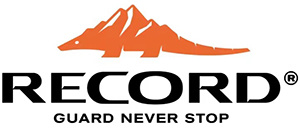There are dry spraying and wet spraying for road construction spray concrete. What is the difference between the two?
Release time:
2023-10-09
Shotcrete uses compressed air to transport concrete mixture in a certain proportion through pipelines and spray it onto the sprayed surface at high speed to solidify and harden, thereby forming a concrete supporting layer. In recent years, shotcrete technology has been widely used in construction, railway and highway tunnel construction, mine tunnel construction, slope reinforcement and other fields with its simple process, unique effects, economical cost and fast construction speed.
Shotcrete uses compressed air to transport concrete mixture in a certain proportion through pipelines and spray it onto the sprayed surface at high speed to solidify and harden, thereby forming a concrete supporting layer. In recent years, shotcrete technology has been widely used in construction, railway and highway tunnel construction, mine tunnel construction, slope reinforcement and other fields with its simple process, unique effects, economical cost and fast construction speed.
Tunnel sprayed concrete is generally divided into four types according to the process flow: dry spraying, tide spraying, wet spraying and mixed spraying. The main difference is that the feeding procedures of each process are different, especially the timing of adding water and accelerator.
Dry spraying: Dry spraying is to mix the aggregate, cement and accelerating admixture evenly in a certain proportion, then load them into the spray machine, and use compressed air to make the dry aggregate suspended in the hose and press it to the spray gun, and then spray it on the nozzle. It is mixed with high-pressure water and sprayed onto the rock surface at a high speed. The mechanical structure used in dry spraying is relatively simple, and mechanical cleaning and troubleshooting are easy. However, its disadvantages are that it is easy to generate large amounts of dust and has a large amount of rebound. Water addition is controlled by the valve at the nozzle. The control of the water-cement ratio is difficult and related to the proficiency of the operator.
Tide spraying: The aggregate is pre-added with a small amount of water to make it moist, and then mixed with cement to reduce dust during loading, mixing and spraying. However, a large amount of water is still added and sprayed at the nozzle, and the spraying process and machinery are the same as the dry spraying process. At present, the tide spraying process is mostly used on construction sites.
Wet spraying: Aggregate, cement and water are mixed evenly according to the designed proportion, and then pressed to the nozzle with a wet spray machine, and then the quick-setting agent is added to the nozzle and sprayed out. The quality of wet shotcrete is easy to control, and the amount of dust and rebound during the spraying process is very small. It is a spraying process that should be developed and applied. However, it has high requirements on spraying machinery, and mechanical cleaning and troubleshooting are troublesome. For soft rock and seepage tunnels with thick spray layers, it is not easy to use wet spray.
Mixed jetting: Also known as the cement-coated sand shell-making jetting method, it is to add a part of the sand to the first water and mix it to wet it, and then add all the cement to force mixing to form a shell; then add the second water and water-reducing agent to mix to form SCE mortar; Forcefully stir the other part of sand, stone and quick-setting agent evenly. Then use a mortar pump and a dry spray machine to send it to the mixing pipe to mix and spray out. Mixed injection is a combination of batch feeding and mixing technology and injection technology. The key is cement-coated sand (or sand, stone) shell-making technology. The main mechanical equipment used in the mixed spraying process is basically the same as the dry spraying process, but the quality of the concrete is better than that of dry spraying concrete, and the dust and rebound rate are greatly reduced. However, a large number of machines are used, the process is complex, and mechanical cleaning and troubleshooting are troublesome. Therefore, the mixed spraying process is generally only used in tunnel projects with large amounts of shotcrete and large cross-sections.
Due to different spraying techniques, the strength of sprayed concrete is different. The strength of dry sprayed and wet sprayed concrete is lower, generally only reaching C20, while mixed spraying and wet spraying can reach C30~C35.
Related dynamics
